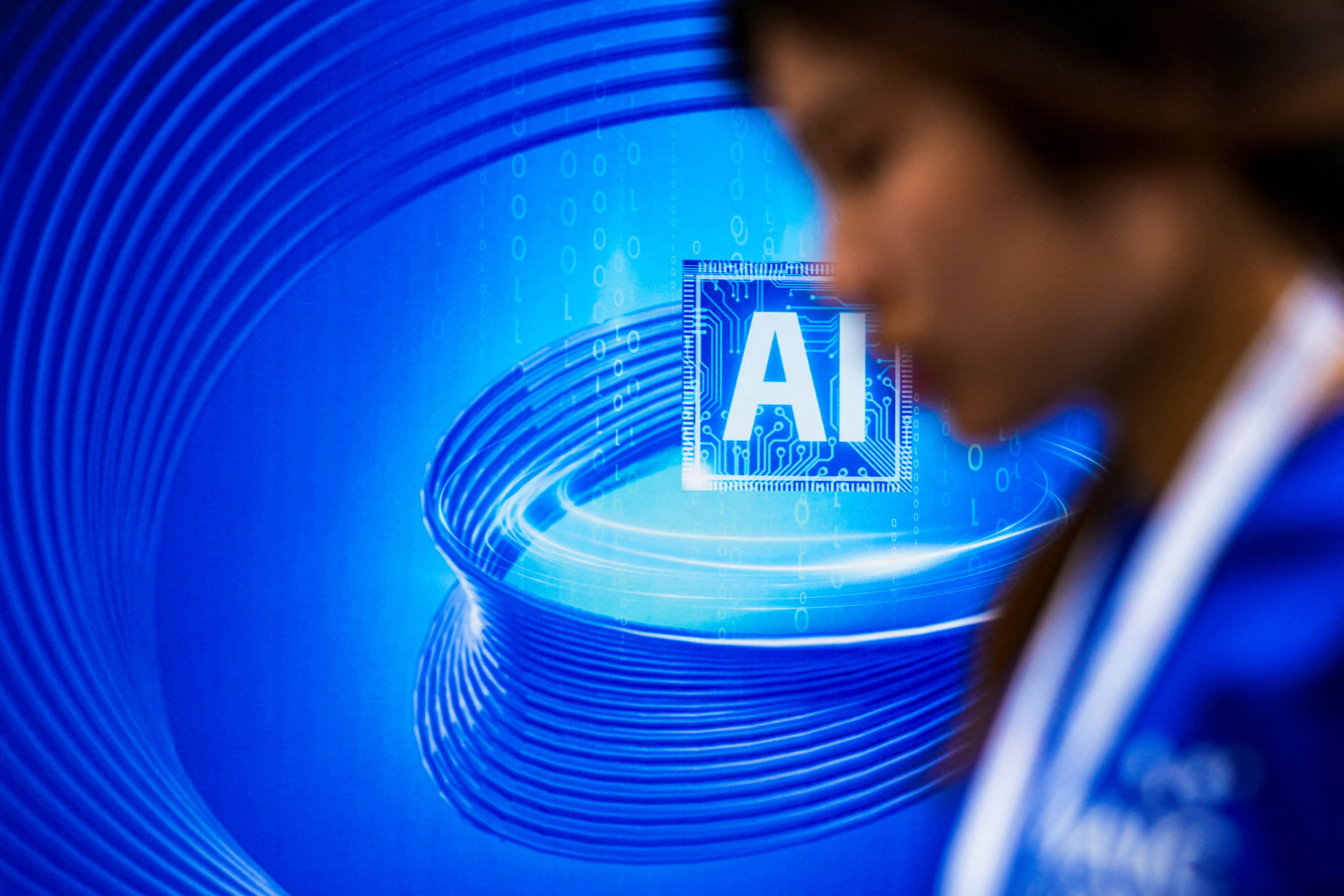How will robots affect jobs? Japanese companies say there's one key factor at play

The hand of humanoid robot operating a switchboard. Image: REUTERS/Fabrizio Bensch
Since the second half of the 1990s, productivity growth has accelerated in the US due to the Information Technology (IT) Revolution. However, the productivity effects of traditional types of IT were exhausted by mid-2000 (e.g. Fernald 2015). Today, the impacts of artificial intelligence (AI) and robotics―referred to as the Fourth Industrial Revolution―on the future economy and society is attracting attention, and many speculative arguments have arisen regarding the possible effects of the Fourth Industrial Revolution. In particular, the substitution of human labour by AI and robots is being hotly discussed.
The Japanese government has begun efforts to develop and diffuse AI and robotics technologies. The Robot Revolution Initiative Council was established in 2014 and has published a report, New Robot Strategy, which includes a five-year action plan to realise the robot revolution. The Artificial Intelligence Research Center was established in the National Institute of Advanced Industrial Science and Technology (AIST) in 2015 to promote development of AI-related innovations. The Japan Revitalization Strategy 2016, which is the core growth strategy of Abenomics, places the Fourth Industrial Revolution at the top of the growth policy agenda.
The impact of AI and robotics on employment
There have been numerous studies on the complementarity/substitutability of IT and the skills of workers. Earlier studies have presented evidence based on the skill-biased nature of IT that indicate skilled labour and IT are complementary, but that unskilled labour and IT are substitutes. More recent studies have shown that IT substitutes for routine tasks conducted by middle-skilled workers, which results in the polarisation of the labour market. Although the discussion about the impact of AI and robotics on employment is a natural extension of the studies on the relationship between IT and labour, quantitative evidence on this issue has been scarce.
The estimation by Frey and Osborne (2013) of the number of jobs at risk to be replaced by future computerisation, including advances in machine learning and mobile robotics, has attracted attention of the media and policy practitioners. According to their study, roughly 47% of total US employment is at risk from computerisation.
On the other hand, Mokyr et al. (2015) survey the historical lessons learned since the Industrial Revolution in the late 18th century and argue that computers and robots will create new products and services and that these product innovations will result in unimaginable new occupations. However, we cannot deny the possibility that the impact of the Fourth Industrial Revolution is different from the past innovations.
Evidence from a firm survey
Against this background, we designed and conducted an original survey of Japanese firms to investigate the impact of AI and robotics (see Morikawa 2016 for details). Specifically, in late 2015, we distributed the Survey of Corporate Management and Economic Policy to a variety of firms operating in both the manufacturing and service industries and obtained more than 3,000 responses. The survey inquiry was wide-ranging, but in this column we focus on the questions about the possible impact of AI and robotics on business and employment. Special attention is paid to the relationship between the skills of human resources and AI-related technologies.
Responses regarding the impact of the development and diffusion of AI and robotics on future business were generally positive – positive responses (27.5%) far surpassed negative responses (1.3%).1 In contrast, the perception of the impact of AI and robotics on employment is negative – 21.8% of firms responded that the development and diffusion of new technologies will decrease the number of employees, and the share of firms expecting positive effects on their employment is notably small (3.7%).2
Lessons learned from the IT Revolution are that firms with relatively low-skilled employees are likely to be affected negatively by the new industrial revolution, and those with highly skilled employees tend to reap benefits. To analyse this technology-skill complementarity in the context of AI, we compare the relationship between firms’ perceptions of the impact of AI and robotics and the education levels of their employees (see Figure 1).
Figure 1 Firms’ views on the impact of AI-related technologies and employee skill levels


Firms expecting positive effects of AI and robotics on their business have significantly higher ratios of university graduates and employees with postgraduate degrees. Conversely, the ratio of highly educated employees is lower among firms that anticipate a negative impact of AI and robotics on their employment. This technology-skill complementarity is confirmed by formal estimations controlling for other covariates including firm size and industry.
According to a previous study, the return to postgraduate education in Japan already exceeds 10% (Morikawa 2015). The diffusion of AI and robots may further raise the return to higher education unless changes in the education system catch up with the technological progress. In order to accelerate the development and diffusion of AI-related technologies and, at the same time, maintain employment opportunities, it is necessary to upgrade human capital, such as increasing the number of people with postgraduate education.
Editors' note: The main research on which this column is based appeared as a Discussion Paper of the Research Institute of Economy, Trade and Industry (RIETI) of Japan.
References
Fernald, J.G. (2015), “Productivity and Potential Output before, during, and after the Great Recession,” in NBER Macroeconomics Annual 2014, edited by J.A. Parker, and M. Woodford. Chicago: University of Chicago Press, 1–51.
Frey, C.B., and M.A. Osborne (2013), “The Future of Employment: How Susceptible Are Jobs to Computerisation?” mimeograph, Oxford Martin School.
Mokyr, J., C. Vickers, and N.L. Ziebarth (2015), “The History of Technological Anxiety and the Future of Economic Growth: Is This Time Different?” Journal of Economic Perspectives 29, 31–50.
Morikawa, M. (2015), “Postgraduate Education and Labor Market Outcomes: An Empirical Analysis Using Micro Data from Japan,” Industrial Relations 54, 499–520.
Morikawa, M. (2016), “The Effects of AI and Robotics on Business and Employment: Evidence from a Survey on Japanese Firms,” RIETI Discussion Paper, 16-E-066.
Endnotes
[1] 71.3% of the firms responded as “neither positive nor negative.”
[2] 28.6% of the firms expect “no impact” of AI and robotics on their employment and 45.8% of firms responded as “don’t have any idea.”
Don't miss any update on this topic
Create a free account and access your personalized content collection with our latest publications and analyses.
License and Republishing
World Economic Forum articles may be republished in accordance with the Creative Commons Attribution-NonCommercial-NoDerivatives 4.0 International Public License, and in accordance with our Terms of Use.
The views expressed in this article are those of the author alone and not the World Economic Forum.
Stay up to date:
Future of Work
Related topics:
Forum Stories newsletter
Bringing you weekly curated insights and analysis on the global issues that matter.
More on Emerging TechnologiesSee all
Dr Gideon Lapidoth and Madeleine North
November 17, 2025






